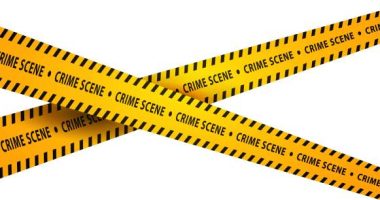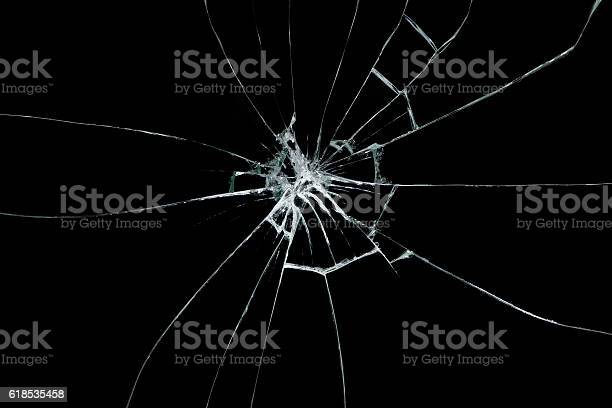When tire tread marks either two dimensional or three dimensional nature are recovered at any scene of crime these are subjected to documentation through photography, casting and lifting followed by measurements. Photographs taken must include the overall, mid-range as well as the close up photographs so as to obtain entire details of the tire tracks along with their orientation.
Out of all the three views of photographs taken overall photographs helps in establishing the relationship of the tire track evidence with the overall scene of crime, close up photographs of such evidence helps in linking the nearby objects and other evidence with the tire impressions and the lastly the close up photographs taken with scale as these helps in identification of the type of tire involved in the crime.
Close up photographs when made available must always be taken with the use of a scale so these can be easily overlapped and blown up in 1:1 ratio and can also be spliced for the purpose of comparison. Tire impressions of much greater length if found at any scene then these must be photographed in segments by the use of a cone so as to mark the beginning and end of such impressions. Photography of these impressions begins with placing the camera on a tripod stand with the lens positioned at the center of the impression.
For photography of impressions bureau scales (the straight scales as opposed to the “L” scale version) are used. Different variety and sizes of bureau scales are used for the purpose of photography. If the tire marks are large than photography begins with the positioning of tape (cloth or fiberglass reel) along the length of the tire track.
The series of photographs includes three to four photographs taken to capture the details of the tread marks and skid marks by with the light utilized at different angles and positions.
Photography of the three-dimensional impressions is carried out using oblique light enhancing only the raised impression areas and shadowing down the lower areas of the impression. Photography of such impression evidence must be done by holding the flash light or oblique light at an angle of 10 degree with the camera fixed at an angle of 90 degree and the flash light is later rotated around the impression so as to get the details of all sides. The flash light is raised up to about 20 degree and the same process is repeated at a 30 degree angle and lastly the light is applied at an angle of 45 degree angle.
Photographs of two dimensional or 2D tire track impressions formed as a result of the contaminants adhering to the treads of tire are taken by placing a scale at the same level as that placed at the bottom of the impression and a series of quality photographs are taken.
Casting and Lifting of 3-D Tire Impressions
For the purpose of collection and analysis, these tire impressions or track marks are casted using different casting materials. Casting is generally defined as filling of the void space of any three dimensional (3-D) impression. Casts are considered to be more useful than a photograph as the former are capable of defining those details in a more enhanced manner which might remain undetected during capturing the photographs.
As these impressions are highly elongated in length casts are made by doing sectioning of these impressions i.e. if the impressions are longer than 4 feet, casting is done by dividing the entire marks into 2 or 3 sections along with labelling of each cast with an impression number placard. The entire rotation of the tire can be obtained by making a cast of 2-2.5m impression. When the tire impressions are longer than 3 feet and are allowed to casts than at the end of both sides of the cast some object must be placed so as to prevent the flowing of casting material onto the impression.
As these impressions are fragile in nature the casts prepared must be strengthened either by the use of sticks or wires or any other suitable material. Generally powdery substances including Dental stone, Plaster of Paris and other products of Gypsum are preferred for making the casts because these substances are made up of small and fine sized particles and therefore the casts produced are also fine.Casting of three dimensional tire impressions is carried out by using wide variety of materials including dental stone, snow wax or snow material, Some of these methods are discussed below:
1) Casting by Gypsum Products (Dental Stone): Dental stone is a gypsum product with same formulations with that of planters used for the casting of time impressions. Gypsum principally composed of Calcium Sulfate dihydrate (CaSO4.2H2O) which when heated to high temperature results in the formation of stone specifically dental stone.
The casts made are generally harder than those of the plaster casts, possess high compressive strength. A consistent solution containing water and powder (dental stone) in a required amount is prepared in order to obtain good results. Depending on to the length. width and depth of the tire impressions the quantity of the water required for making a cast is determined. For instance, if the impression is highly shallow and 3 feet long the casting can be done by only 8 to 10 pounds of casting powder, also a deeper or wider impression may need 25 pounds of powder. The process of casting using Dental stone is carried out in the following steps.
- The process begins with the application of a fixative (commonly hair spray is used), at a distance of about 18 inches from the soil usually in a sweeping motion so as to avoid any damage and in order to solidify it.
- Secondly the powder along with the sufficient amount of water is added into the container (bucket) or in a zip-top bag. The slurry is then mixed either by moving the bug in a back and forth motion or by stirring continuously with the hands for about three minutes so as to obtain a viscous liquid.
- The solution is prepared always as either Powder :Water ratio or in the form of Water: Powder ratio. In this ratio the amount of powder is always 100 and the amount of water in such a ratio analysis must be 30 which also defines the consistency of the solution or the slurry might be prepared by adding 18.6 parts water to 100 parts powder. The density, hardness, and strength of the resulting cast depends on the consistency of the solution. It also helps in determining the drying time of the cast. Dental stone substance is allowed to set up quickly in the time period of 30 minutes.
- After this the slurry prepared is either allowed to pour on to the surface by placing a piece of cardboard over the impression so as to break the force of dental stone and to distribute it uniformly along the impression length. At the middle of the cardboard letter X is drawn so the slurry be poured from that centre point. The cardboard must be hold at about a distance of 1inch from the impression and kept in line with the impression and also placed in a slightly tilted position so as to control the flow of the slurry onto the impression.
- Another method involves the use of the sealed (Zip top) bag opened at one side for pouring the slurry onto the impression. Sometimes another casting material is poured over it so as to impart additional thickness.
- After the preparation the cast are labelled at their back by the personnel with the help of either marker or by scratching the date, their initials, and other relevant information. Labelling of the cast can also be done by using an alternate method which involves the use of a paper containing the necessary details settled into the cast after pouring.
- The cast so prepared is then photographed to record the essential details which is followed by the drying of the cast properly either by using some industrial drying process or by evaporation. Drying of the cast is usually occurs in one hour but the complete drying takes approximately 48 hours so the scraping of the soil must not be done as this leads to damage to the details.
- After the drying the cast is lifted by removing the extra soil either through rinsing with running water or a soft bristled brush can also be used for achieving this former
2) Casting Tire Impressions in Snow by Snow Wax: There are certain instances which involves the occurrence of tire impressions in the snow. The recovery of such impressions begins with the photography followed by making casts of such impressions. As the contrast of the snow impression is low it can be increased by spraying with an automotive gray primer paint which is sequentially treated with the snow print wax spray or snow print powder.
The casting of such evidence is carried out with the application of snow was or a colored spray paint generally at an angle of 45-degree so that the ridges or other areas of the impressions are scuffed out. This casting method is used only to impart a small amount of color to the details of certain relevant areas of the impression resulting in increased contrast which in turns proves to be an aid in doing the photography.
The material (Snow wax) being an aerosol in nature must be applied cautiously at a wider distance from the impression evidence so as to avoid the chances of distortion or damage to the details of the impression because of the force of the aerosol.
The application procedure starts firstly with dry casting method ie sifting of fine layer (about % inch) of dental stone powder over the impression. The next step deals with the misting of water via a water spray bottle onto the dental stone. This process is repeated further two times Le spraying of other three coats of wax at an interval of one to two minutes followed by sequential misting of water.
After the completion of this process the regular dental stone powder is poured over to these impressions to acquire the complete cast. Apart from dry casting method the normal method involves the spraying of the three coats of waxy substance onto the impression at a time interval of one to two minute. After the completion of casting the cast is allowed to dry and left undisturbed for ten minutes. When the cat becomes completely dried and hardened it is labelled, removed and lifted.
These impressions after application of these waxy substances absorbs a large amount of energy which causes melting of the snow therefore such impressions must be immediately photographed after the application of the snow was Sometimes during extreme cold temperatures heaping potassium sulphate is also added to the mixture prepared for casting as it will accelerate the setting of the cast and reduce down the temperature.
3) Casting Tire Impressions in Snow by Sulfur– Tire impressions found in snow can also be casted using sulfur. This method is considered to be the best method for casting the tire impressions. Sulfur used for such purpose is available in the form of powder or prill which has to be melted prior to its application. The procedure begins with the melting of the Sulfur on an electric hot plate or via a 2-3 quart pan.
A required amount of Sulfur is added to the pan and then heated slowly with continuous stirring using a wooden paint which results in clumping the sulfur together. Prolonged heating makes the sulfur a brown colored syrupy material which is not be useful for further processes. The process ends with the formation of yellow crystals on cooling which indicated that the Sulphur is ready for pooting on the impression.
The pouring is carried out with the uniform distribution of the sulfur onto the impression which causes the hardening of the snow when the sulfur strikes the snow and creates a shell which is capable of capturing the fine details of the tire impressions.
Fore more updates, subscribe to our blog modernforensic.in








